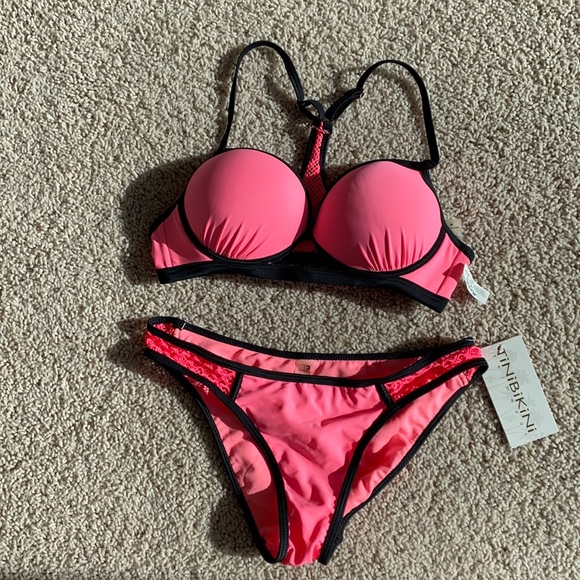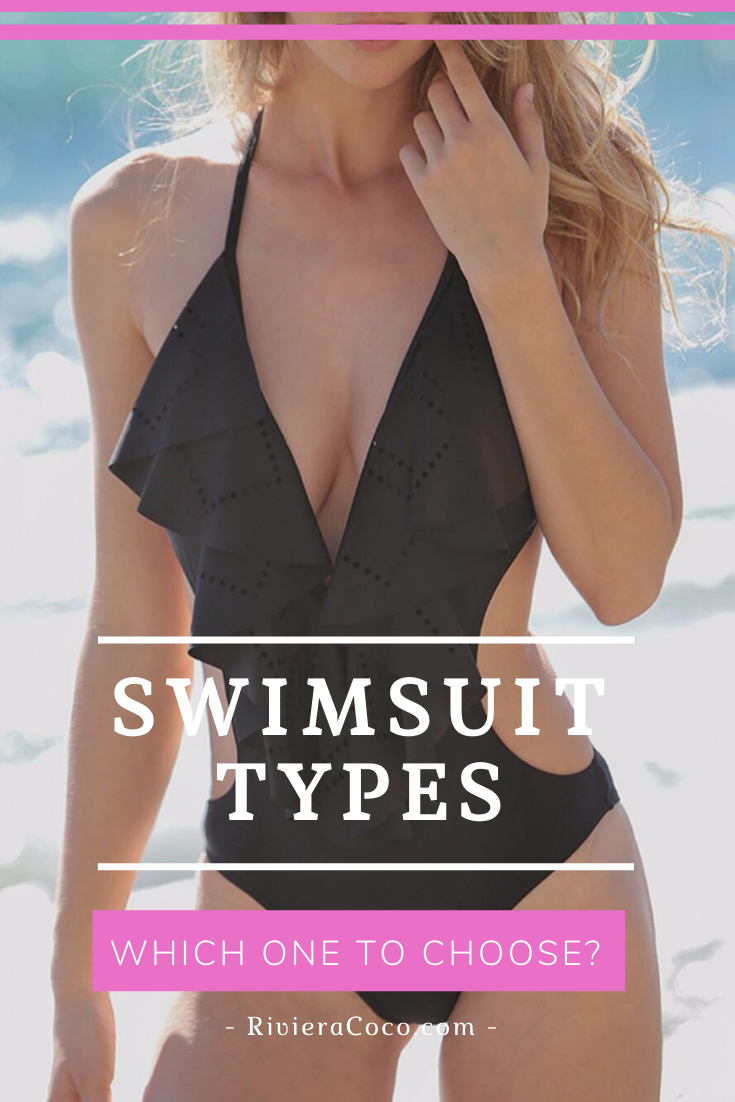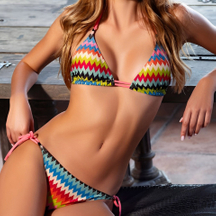Content Menu
● Understanding Swimwear and Lingerie Manufacturing
>> The Similarities Between Lingerie and Swimwear
>> The Differences in Manufacturing
● Should I Use a Lingerie Manufacturer to Produce Swimwear?
>> Pros of Using a Lingerie Manufacturer for Swimwear
>> Cons of Using a Lingerie Manufacturer for Swimwear
● Benefits of Using a Lingerie Manufacturer for Swimwear
>> 1. Expertise in Fit and Comfort
>> 2. Access to Specialized Fabrics
>> 3. Design Innovation
>> 4. Production Flexibility
>> 5. Established Supply Chains
● Challenges of Using a Lingerie Manufacturer for Swimwear
>> 1. Technical Limitations
>> 2. Equipment Compatibility
>> 3. Quality Assurance
>> 4. Market Perception
● Real-World Examples and Industry Insights
>> Case Study: Private Label Swimwear & Lingerie Manufacturer
>> Swimwear Manufacturers vs. Lingerie Manufacturers
● Expert Recommendations
● The Role of Technology and Quality Control
● Ethical and Sustainable Manufacturing
● Practical Considerations for Brands
>> 1. Research and Selection
>> 2. Communication
>> 3. Prototype Development
>> 4. Quality Control Measures
>> 5. Cost Considerations
● Conclusion
● Frequently Asked Questions (FAQs)
>> 1. Should I use a lingerie manufacturer to produce swimwear?
>> 2. What are the main differences between swimwear and lingerie manufacturing?
>> 3. Can a lingerie manufacturer handle swimwear production?
>> 4. What should I look for in a manufacturer if I want to produce both swimwear and lingerie?
>> 5. How important is ethical manufacturing in swimwear and lingerie production?
● Citations:
When you are a swimwear factory in China providing OEM services for international swimwear brands, wholesalers, and producers, you may wonder: should I use a lingerie manufacturer to produce swimwear? This question is not uncommon, especially for brands and manufacturers seeking to streamline their supply chain or explore new production options. To answer this, it is essential to understand the similarities and differences between swimwear and lingerie manufacturing, as well as the potential benefits and drawbacks of using a lingerie manufacturer for swimwear production.
Below, we will explore this topic in depth, providing insights for both swimwear and lingerie brands considering cross-over production, and for OEM factories like yours who may be approached by clients with similar questions.

Understanding Swimwear and Lingerie Manufacturing
Swimwear and lingerie are both intimate apparel categories, but their intended uses, fabric requirements, and manufacturing processes differ significantly.
- Swimwear is designed for use in water, such as swimming, sunbathing, or beach sports. It is typically made from durable, quick-drying, and stretchy synthetic fabrics like nylon, spandex, or polyester. The manufacturing process emphasizes waterproofing, UV resistance, and chlorine resistance[7][3].
- Lingerie, on the other hand, is intended for intimate wear or sleepwear. It is made from softer, more delicate materials such as lace, silk, or cotton, focusing on comfort, aesthetics, and sometimes support[7][3].
While both categories require precise stitching and attention to detail, the technical demands of swimwear—such as resistance to chlorine, saltwater, and UV exposure—are not typically required for lingerie.
The Similarities Between Lingerie and Swimwear
Both lingerie and swimwear are intimate apparel categories that require a keen understanding of fabric properties, fit, and design aesthetics. Here are some key similarities:
1. Fabric Selection: Both types of garments often utilize stretchy, form-fitting materials. Swimwear typically requires fabrics that are resistant to chlorine and saltwater, while lingerie may focus more on comfort and aesthetics.
2. Fit and Comfort: The fit is crucial in both categories. Lingerie must provide support and comfort, while swimwear needs to ensure that it stays in place during physical activities.
3. Design Complexity: Both lingerie and swimwear can feature intricate designs, including lace, cut-outs, and unique patterns. This complexity requires skilled craftsmanship and attention to detail.
The Differences in Manufacturing
Despite the similarities, there are notable differences in the manufacturing processes:
1. Technical Requirements: Swimwear manufacturing often involves more technical specifications due to the need for durability and shape retention in water. Lingerie may prioritize softness and delicate finishes.
2. Production Techniques: Swimwear typically requires specialized sewing techniques, such as using zigzag stitches and overlock machines, to handle stretchy fabrics effectively. Lingerie may not require the same level of technical sewing.
3. Quality Control: The quality control processes may differ, with swimwear needing rigorous testing for water resistance and durability, while lingerie focuses on comfort and aesthetic appeal.
Should I Use a Lingerie Manufacturer to Produce Swimwear?
This leads us back to the core question: should I use a lingerie manufacturer to produce swimwear? The answer depends on several factors, including your production goals, quality requirements, and the capabilities of the manufacturer.
Pros of Using a Lingerie Manufacturer for Swimwear
- Expertise in Intimate Apparel: Lingerie manufacturers often have extensive experience with delicate fabrics, intricate stitching, and complex pattern-making, which can be beneficial for certain swimwear styles, especially those with lace or mesh overlays[4][13].
- Customization and Flexibility: Many lingerie manufacturers offer high levels of customization, allowing you to create unique designs and experiment with different materials[4][13].
- Smaller Minimum Order Quantities (MOQs): Lingerie manufacturers may offer lower MOQs compared to some swimwear factories, making them attractive for small brands or test runs[14].
- Attention to Detail: Lingerie production often involves meticulous quality control, which can translate to well-finished swimwear if the manufacturer has the right technical capabilities[4][13].
Cons of Using a Lingerie Manufacturer for Swimwear
- Material Limitations: Lingerie manufacturers may not have access to or experience with the specialized fabrics required for swimwear, such as chlorine-resistant or UV-protective materials[7][3].
- Technical Requirements: Swimwear must withstand harsh conditions, including exposure to chlorine, saltwater, and sunlight. Lingerie manufacturers may lack the necessary equipment or expertise to meet these demands[7][3].
- Production Process Differences: The sewing techniques, elastic application, and finishing processes for swimwear are different from those for lingerie. For example, swimwear requires flatlock stitching and special elastic that can withstand water and sun exposure[8].
- Quality Control Standards: Swimwear has unique quality control requirements, such as colorfastness, seam strength, and resistance to fading. Lingerie manufacturers may not be equipped to test for these properties[1][11].

Benefits of Using a Lingerie Manufacturer for Swimwear
1. Expertise in Fit and Comfort
Lingerie manufacturers are well-versed in creating garments that fit snugly and comfortably against the body. This expertise can translate well into swimwear production, ensuring that the final product is both flattering and functional.
2. Access to Specialized Fabrics
Many lingerie manufacturers have access to high-quality, specialized fabrics that can also be used in swimwear. This includes materials that are soft, stretchy, and durable, which are essential for both lingerie and swimwear.
3. Design Innovation
Lingerie manufacturers often stay on top of fashion trends and innovations. By collaborating with them, swimwear brands can benefit from fresh design ideas and techniques that can set their products apart in a competitive market.
4. Production Flexibility
Lingerie manufacturers may offer more flexibility in terms of small-batch production, which can be advantageous for swimwear brands looking to test new designs or enter niche markets without committing to large orders.
5. Established Supply Chains
Many lingerie manufacturers have established supply chains for sourcing materials and components, which can streamline the production process for swimwear brands.
Challenges of Using a Lingerie Manufacturer for Swimwear
1. Technical Limitations
While lingerie manufacturers have expertise in fit and comfort, they may lack the specific technical knowledge required for swimwear production. This could lead to challenges in achieving the desired durability and performance characteristics of swimwear.
2. Equipment Compatibility
The machinery used in lingerie manufacturing may not be fully equipped for swimwear production. For example, swimwear often requires specific sewing machines that can handle stretchy fabrics effectively.
3. Quality Assurance
Ensuring the quality of swimwear can be more complex than lingerie, particularly regarding water resistance and durability. Lingerie manufacturers may need additional training or equipment to meet these standards.
4. Market Perception
Using a lingerie manufacturer for swimwear might affect brand perception. Customers may associate lingerie manufacturers with delicate, intimate apparel rather than functional swimwear, which could impact marketing efforts.
Real-World Examples and Industry Insights
To further explore the question should I use a lingerie manufacturer to produce swimwear, let's look at some real-world examples and industry practices.
Case Study: Private Label Swimwear & Lingerie Manufacturer
Some manufacturers, such as Private Label in Latvia, specialize in both swimwear and lingerie production. They offer end-to-end services, including custom product development, bulk production, and ready-to-brand collections for both categories[4][10]. This dual expertise allows them to leverage their skills in intricate sewing and pattern-making for both swimwear and lingerie, provided they have the right materials and technical know-how.
> “At Private Label, we stand as one of the leading upscale manufacturers, dedicated to crafting high-quality swimwear, beachwear, and lingerie for discerning brands across Europe and America. Our expertise is intricately woven into every seam.”[4]
Swimwear Manufacturers vs. Lingerie Manufacturers
| Feature | Swimwear Manufacturer | Lingerie Manufacturer |
| Main Materials | Nylon, spandex, polyester | Lace, silk, cotton |
| Intended Use | Swimming, beach, sports | Intimate wear, sleepwear |
| Technical Requirements | Chlorine/UV resistance, quick-dry | Comfort, aesthetics, support |
| Stitching Techniques | Flatlock, special elastic | Delicate, intricate stitching |
| Quality Control | Colorfastness, seam strength | Fit, comfort, aesthetics |
Expert Recommendations
Based on industry best practices, here are some recommendations for brands and OEM factories considering whether to use a lingerie manufacturer to produce swimwear:
- Assess the Manufacturer's Capabilities: Before committing, ask the manufacturer if they have experience producing swimwear and if they have access to the necessary materials and equipment[14][9].
- Request Samples: Ask for samples of swimwear they have produced in the past to evaluate quality, fit, and durability[9][14].
- Discuss Technical Requirements: Clearly communicate your expectations regarding fabric performance, stitching, and finishing[1][9].
- Consider Hybrid Manufacturers: Some manufacturers specialize in both swimwear and lingerie, offering the best of both worlds[4][13].
- Evaluate Cost and Lead Times: Compare the costs and lead times of using a lingerie manufacturer versus a dedicated swimwear manufacturer[14][12].
The Role of Technology and Quality Control
Regardless of whether you choose a swimwear or lingerie manufacturer, technology and quality control are critical to success. Advanced manufacturing technologies, such as 3D design software, automated cutting machines, and digital printing, can streamline production and improve product quality[2][11].
Quality control is especially important for swimwear, as defects can lead to product failures in harsh environments. Look for manufacturers that implement strict quality control measures at every stage of production, including material inspection and final product testing[1][11].
Ethical and Sustainable Manufacturing
Ethical and sustainable manufacturing practices are increasingly important for brands and consumers. When evaluating whether to use a lingerie manufacturer to produce swimwear, inquire about their ethical practices, certifications, and commitment to sustainability[9][2].
Many manufacturers now focus on reducing waste, using eco-friendly materials, and ensuring fair labor practices. Choosing a manufacturer with strong ethical credentials can help your brand stand out in a competitive market[2][9].
Practical Considerations for Brands
1. Research and Selection
Before deciding to partner with a lingerie manufacturer, brands should conduct thorough research. Look for manufacturers with experience in both lingerie and swimwear, and request samples to assess quality.
2. Communication
Open communication is essential. Brands should clearly outline their expectations regarding fit, fabric, and production timelines to ensure alignment with the manufacturer's capabilities.
3. Prototype Development
Developing prototypes is crucial in the swimwear industry. Brands should work closely with manufacturers to create samples that can be tested for fit and performance before moving to full production.
4. Quality Control Measures
Implementing strict quality control measures is vital. Brands should establish clear criteria for quality checks, particularly focusing on the durability and performance of swimwear.
5. Cost Considerations
Cost is always a factor in manufacturing decisions. Brands should evaluate the cost-effectiveness of using a lingerie manufacturer versus a specialized swimwear manufacturer, considering both production costs and potential market pricing.
Conclusion
In conclusion, the decision to use a lingerie manufacturer for swimwear production is not straightforward. While there are benefits, such as expertise in fit and access to specialized fabrics, there are also challenges related to technical limitations and market perception. Brands must carefully weigh these factors and conduct thorough research to make an informed decision that aligns with their goals and target market.
Frequently Asked Questions (FAQs)
1. Should I use a lingerie manufacturer to produce swimwear?
Answer: It depends on the manufacturer's capabilities. If they have experience with swimwear materials and technical requirements, it can be a good option. Otherwise, it is better to work with a dedicated swimwear manufacturer[4][13].
2. What are the main differences between swimwear and lingerie manufacturing?
Answer: Swimwear is made from durable, quick-drying synthetic fabrics and must withstand harsh conditions. Lingerie is made from softer, more delicate materials and focuses on comfort and aesthetics[7][3].
3. Can a lingerie manufacturer handle swimwear production?
Answer: Some lingerie manufacturers can produce swimwear if they have the right materials and technical expertise. However, not all are equipped to meet swimwear's unique requirements[4][13].
4. What should I look for in a manufacturer if I want to produce both swimwear and lingerie?
Answer: Look for a manufacturer with experience in both categories, access to the necessary materials, and a strong quality control process[4][9].
5. How important is ethical manufacturing in swimwear and lingerie production?
Answer: Ethical manufacturing is increasingly important for brands and consumers. Choose a manufacturer with strong ethical credentials and a commitment to sustainability[9][2].
Citations:
[1] https://deepwear.info/blog/swimwear-manufacturing/
[2] https://www.abelyfashion.com/what-are-the-key-advantages-of-manufacturing-swimwear-in-los-angeles-ca.html
[3] https://www.jaceapparel.com/lingerie-vs-bikini/
[4] https://www.privatelabel.lv
[5] https://activeqstom.com
[6] https://www.youtube.com/watch?v=CvK6ZAXO8G8
[7] https://www.abelyfashion.com/what-s-the-differences-between-bikini-and-lingerie.html
[8] https://www.youtube.com/watch?v=bZFOF11qtVc
[9] https://www.abelyfashion.com/10-key-questions-to-ask-your-potential-ethical-swimwear-manufacturing-partner.html
[10] https://www.privatelabel.lv/faqs/
[11] https://www.abelyfashion.com/competitive-swimwear-manufacturers-a-comprehensive-guide-for-oem-services.html
[12] https://baliswim.com/finding-the-right-swimwear-manufacturer-for-your-brand/
[13] https://www.swimwearmanufacturers.co.uk/faq
[14] https://vanjonssondesign.com/blog/2019/2/5/questions-to-ask-a-manufacturer
[15] https://shopvirtueandvice.com/blogs/news/swimwear-manufacturing
[16] https://www.reddit.com/r/Swimming/comments/1iq3c6a/starting_a_swimwear_brand_looking_for_reliable/
[17] https://fourthwall.com/blog/how-to-start-a-swimwear-line-design-and-sell-custom-swimwear-online
[18] https://www.gettyimages.com/photos/swimwear-production-at-malia-mills-manufacturing-facility
[19] https://www.instagram.com/swimwearmanufacturers/
[20] https://swimwearmanufacturermiami.com/photo-gallery
[21] https://swimwearmanufacturercalifornia.com/swimwear-photo-gallery
[22] https://swimwearbali.com/10-common-questions-about-swimwear-manufacturing
[23] https://www.leftyproductionco.com/post/what-you-should-ask-a-lingerie-manufacturer
[24] https://www.linkedin.com/pulse/some-questions-women-underwear-custom-made-oem-odm-manufacturing-lv
[25] https://www.ty-swim.com/new/The-Challenges-of-Swimwear-Industry.html
[26] https://appareify.com/hub/swimwear/best-swimwear-manufacturers



































